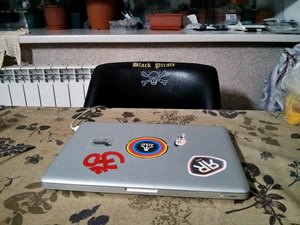 Perm is not the oldest Russian city. The first settlement on the territory of modern Perm appeared in the 17th century when the Russians founded a small settlement in the place where the River Yagoshiha runs into the Kama River. The new village was called after the river flowing here, Yagoshiha. The need for exploring these lands primarily arose when Peter the Great came to power. He was searching for new iron, copper and silver deposits. Ural was rich exactly with such deposits, so the young emperor often sent expeditions here.
Perm is not the oldest Russian city. The first settlement on the territory of modern Perm appeared in the 17th century when the Russians founded a small settlement in the place where the River Yagoshiha runs into the Kama River. The new village was called after the river flowing here, Yagoshiha. The need for exploring these lands primarily arose when Peter the Great came to power. He was searching for new iron, copper and silver deposits. Ural was rich exactly with such deposits, so the young emperor often sent expeditions here.
As they found new mineral deposits here, plants were built and new settlements were formed around them. Most of them turned into big cities but some of them remained small villages. The deposit of copper sandstone was found near the village of Yagoshiha, so it was decided to build a copper plant here. When the plant was completed under the project of engineer Vasily Tatischev, it was called the Yagoshihinsky Plant. The river was blocked by a dam and a pond used for the plant’s needs was formed.
At that time, there was only one water route for trade caravans, on the Volga and the Kama Rivers. So, they pulled in the Yagoshihinsky quay, replenished foodstuffs and changed the rigging here. At the end of the 18th century, the village became the city called Perm, a provincial center of the region, issued by Empress Catherine the Great. Perm was developing not only as an industrial city although its population had risen to 28 thousand people by the end of the 19th century. Plants and factories were built here. New workers arrived, new houses and streets were built too. A railways station, stone buildings and water pipelines appeared. In 1901, one of the first Russian power plants was built here.
 In Perm, there are a lot of interesting historic attractions and culture centers. The spectacular historic building is occupied by the Perm Art Gallery. It presents over 50 000 artworks, some of which were created in the Early Middle Ages. The collections of wooden sculptures and old icons have a special value. The visitors can also admire the samples of antique ceramics. One of the rooms houses the collection of medieval paintings. In some rooms of the museum, temporary exhibitions of contemporary art are held.
In Perm, there are a lot of interesting historic attractions and culture centers. The spectacular historic building is occupied by the Perm Art Gallery. It presents over 50 000 artworks, some of which were created in the Early Middle Ages. The collections of wooden sculptures and old icons have a special value. The visitors can also admire the samples of antique ceramics. One of the rooms houses the collection of medieval paintings. In some rooms of the museum, temporary exhibitions of contemporary art are held.
Among the religious monuments of Perm, the Cathedral of St. Peter and St. Paul is worth being mentioned. It was built at the beginning of the 18th century. The cathedral was constructed at the site of the former wooden church. Now, it is a vivid example of so-called provincial baroque style. It was closed in 1929 but the building was not destroyed. It gained its status back only in 1990 after being reconstructed.
 The beautiful architectural monument is Stefanov Holy Trinity Monastery that was founded in the late 18th century. Originally, all its constructions were made of wood but it was decided to build a new stone church in 1816. The friary founded here has been one of the largest in the region for many years. Like other religious venues, it was closed after the Revolution. In the first half of the 20th century, the monastery was rebuilt into a warehouse. It was restored completely only in 1995 and is still working.
The beautiful architectural monument is Stefanov Holy Trinity Monastery that was founded in the late 18th century. Originally, all its constructions were made of wood but it was decided to build a new stone church in 1816. The friary founded here has been one of the largest in the region for many years. Like other religious venues, it was closed after the Revolution. In the first half of the 20th century, the monastery was rebuilt into a warehouse. It was restored completely only in 1995 and is still working.
The House of Gribushin can pretend for the title of the most beautiful architectural monument in Omsk. It is a luxurious mansion in the modern style built for the local official’s family in the late 19th century. The building the city guests can see today was rebuilt in 1905 upon the order of merchant Gribushin who became its second owner. This luxurious mansion had been in private ownership until 1919 and then came to the city government. After the Revolution, it served as the military hospital, children's hospital, etc. Today, it attracts tourists with its fascinating facade decorated with stucco and delicate sculptures.



